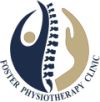Manual therapy is a specialized form of physical therapy that involves hands-on techniques to assess, treat, and manage musculoskeletal conditions and promote healing. It is performed by trained healthcare professionals, such as physiotherapists, chiropractors, or osteopaths, who use their hands to manipulate, mobilize, and treat various body tissues. Here’s a summary of manual therapy:
1. Purpose: The primary goal of manual therapy is to alleviate pain, restore mobility, improve tissue function, and promote healing. It is commonly used to treat musculoskeletal conditions such as back pain, neck pain, joint stiffness, muscle tension, and sports injuries.
2. Assessment and Evaluation: Before starting manual therapy, the therapist performs a thorough assessment of the patient’s condition, which may include a review of medical history, observation of movement patterns, and specific tests to identify the underlying cause of the problem. This helps in determining the most appropriate techniques and treatment plan.
3. Hands-on Techniques: Manual therapy involves a variety of hands-on techniques that are applied directly to the affected area or surrounding tissues. Some common techniques include:
• Soft tissue mobilization: Gentle pressure, stretching, or massage techniques are used to release muscle tension, reduce scar tissue, and improve tissue flexibility.
• Joint mobilization: The therapist applies controlled movements to specific joints to restore normal range of motion, reduce stiffness, and improve joint function.
• Manipulation: High-velocity, low-amplitude thrusts are applied to joints to alleviate joint restrictions, restore alignment, and relieve pain.
• Myofascial release: Techniques are used to release tension in the fascia (connective tissue) surrounding muscles, allowing for improved mobility and reduced pain.
4. Individualized Treatment: Manual therapy techniques are tailored to the individual’s specific needs, taking into account their condition, pain levels, and physical limitations. Treatment plans may also incorporate other therapeutic modalities, such as exercise therapy, electrotherapy, or postural correction techniques, to enhance the effectiveness of the manual therapy interventions.
5. Pain Management: Manual therapy techniques can help reduce pain through various mechanisms, such as promoting blood circulation, releasing endorphins (natural pain-relieving substances), and reducing muscle tension. The therapist may also provide advice on self-management strategies, including posture correction, ergonomics, and home exercises to help manage pain between sessions.
6. Adjunct to Rehabilitation: Manual therapy is often used as an adjunct to other rehabilitation treatments, such as exercise therapy or stretching programs. By addressing specific restrictions and dysfunctions in the musculoskeletal system, manual therapy can enhance the effectiveness of rehabilitation, promote faster recovery, and improve overall outcomes.
7. Ongoing Assessment and Monitoring: Throughout the course of treatment, the therapist continuously evaluates the patient’s progress and modifies the treatment plan as needed. This ensures that the therapy remains effective and targets the underlying issues contributing to the condition.
